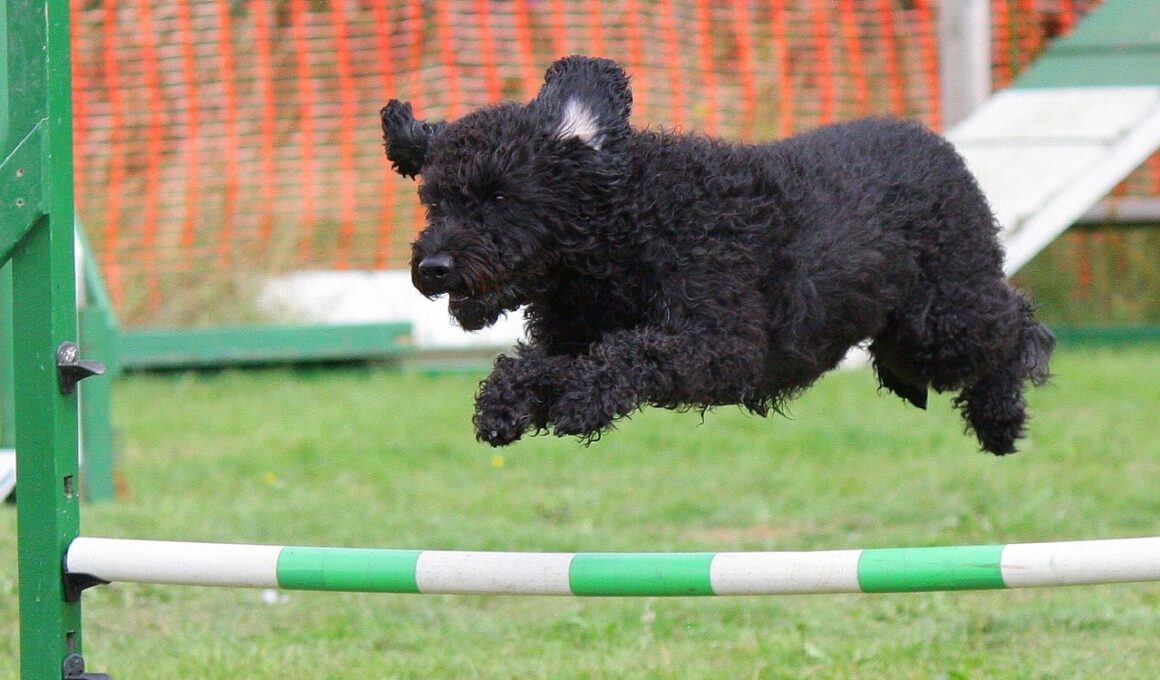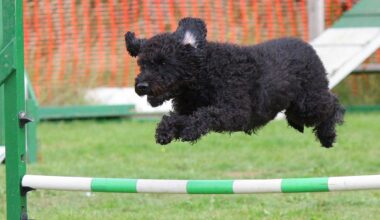Choosing the Right Equipment for Dog Agility Training
When it comes to dog agility training, selecting the appropriate equipment is vital for both the dog’s safety and performance. Start with basic agility equipment like jumps, tunnels, and weave poles. Jumps are available in various styles, including bar jumps and tire jumps, each serving to teach the dog different techniques for jumping over obstacles. Tunnels are beneficial for encouraging speed and developing confidence. Quality equipment ensures your dog can train effectively without the risk of injury. Look for equipment made from durable materials, such as PVC or high-grade plastic, to withstand outdoor conditions.
Another essential piece of equipment is the agility seesaw. This piece helps improve your dog’s balance and coordination. Opt for a seesaw designed with non-slip surfaces to enhance grip. The size of the seesaw matters, as it should suit your dog’s breed and height. Furthermore, the sturdiness of the structure is crucial to avoid accidents during training. Consider purchasing a collapsible or adjustable model for easy storage and transport to various training locations, whether in your backyard or at a training facility.
Importance of Quality Equipment
Training your dog in agility also requires quality contact equipment like A-frames and dog walks. These pieces obligate dogs to maintain control over their bodies. A-frames come in various heights; choose appropriately for your dog’s skill level. Meanwhile, dog walks should be wide enough for stability and equipped with safety railings when necessary. Seek equipment that features a non-slip surface to prevent slipping during practice. Regular maintenance and inspection of your agility gear is also crucial to ensure nothing is broken or damaged.
Another integral part of agility training is the use of a tunnel selector. This training device teaches the dog to choose the correct tunnel path while navigating through obstacles. A good tunnel selector should be lightweight yet stable enough to resist displacement when the dog pushes against it. The variety and design of tunnels used will help heighten your dog’s experience and make training enjoyable. When buying one, always assess the size and functionality to suit your dog’s agility level.
Utilizing Training Accessories
Using accessories like cones and flags can enhance agility training sessions. These tools can delineate specific areas for jumps and targets for your dog. Proper placement encourages your dog to navigate through an agility course efficiently. Cones can be used to create an obstacle course, facilitating various agility drills designed to improve speed and coordination. They should be lightweight for easy handling, yet stable enough to remain in place during exercises. Choose colors that stand out against the background for better visibility during training.
Harnesses and leashes are also essential components of any agility training program. A comfortable yet sturdy harness is necessary for controlling your dog during practice, as it allows for free movement without causing stress on the dog’s neck. Leashes should be lightweight and durable, enabling you to guide your dog easily without hindrance. While training, ensure that your harness doesn’t restrict your dog’s movement, permitting them to achieve their agility goals without discomfort. Frequent evaluation of their fit is necessary as they grow.
Where to Shop for Equipment
For purchasing agility equipment, consider specialized pet supply stores or online retailers. Look for vendors who offer a range of options from basic to advanced equipment. Check customer reviews, as insights from other trainers can significantly assist you in making the right choice. Many retailers offer guarantees on their products, ensuring you receive quality gear that lasts. Sometimes, you can find great deals at local agility competitions or expos where vendors showcase their offerings, giving you a chance to test items firsthand.
Don’t forget to consider the price of your equipment. High-quality agility gear can be an investment but is crucial for effective training sessions. Balance cost with durability and performance; buying cheaper equipment might mean more replacements in the long run. Prioritize purchasing essential gear that will significantly impact your dog’s training and development. Finally, keep your training environment organized by storing your equipment properly. This practice ensures a safe training area for you and your dog, ready for the next agility session.


